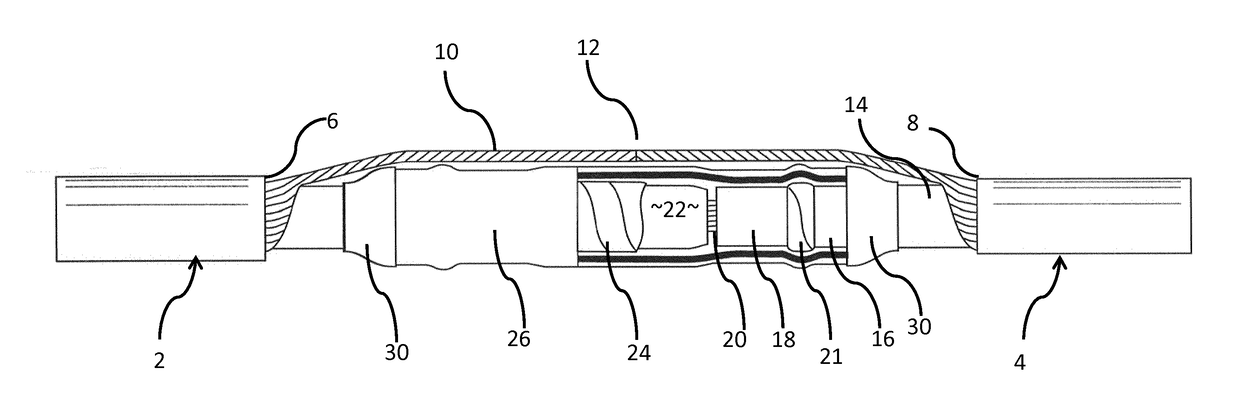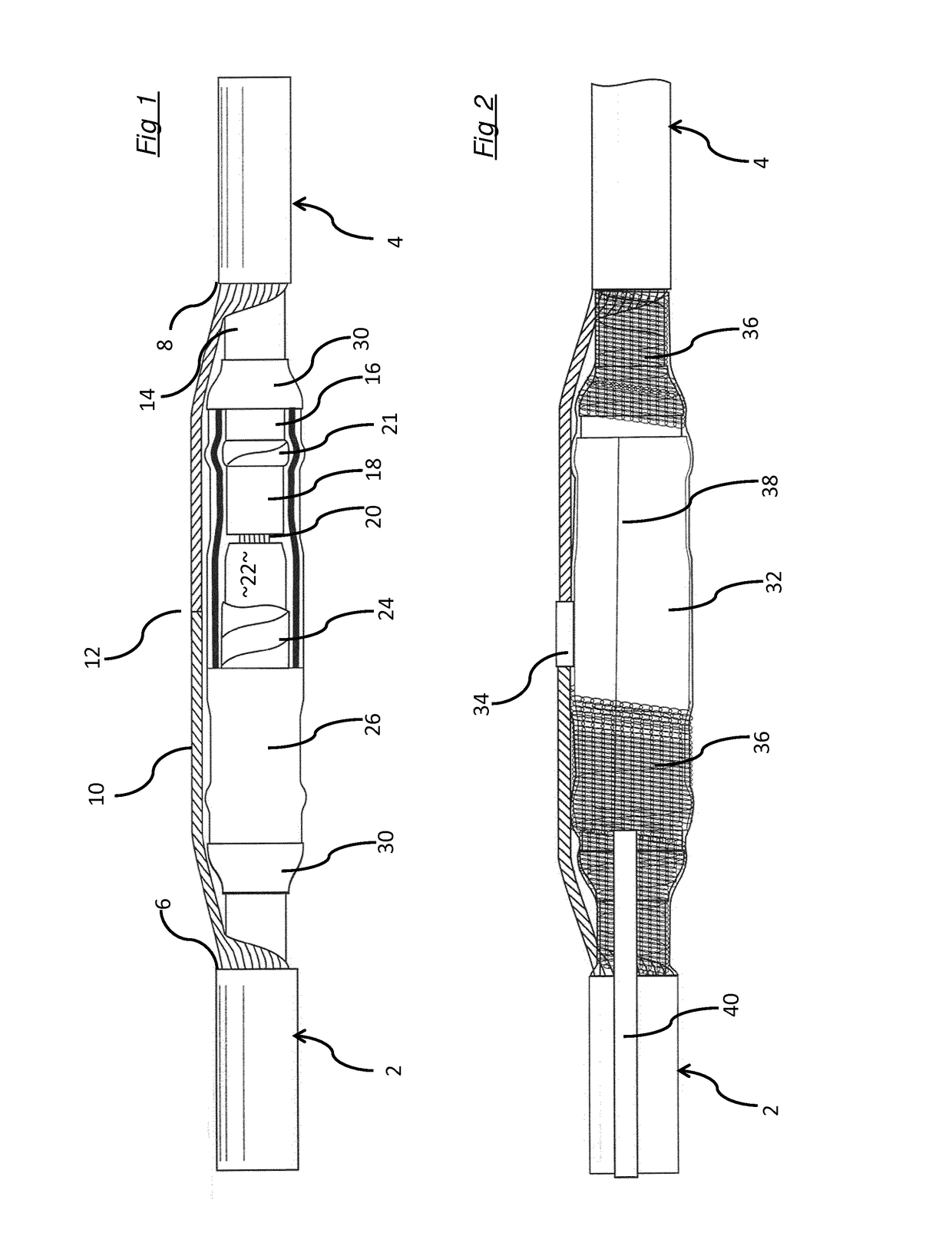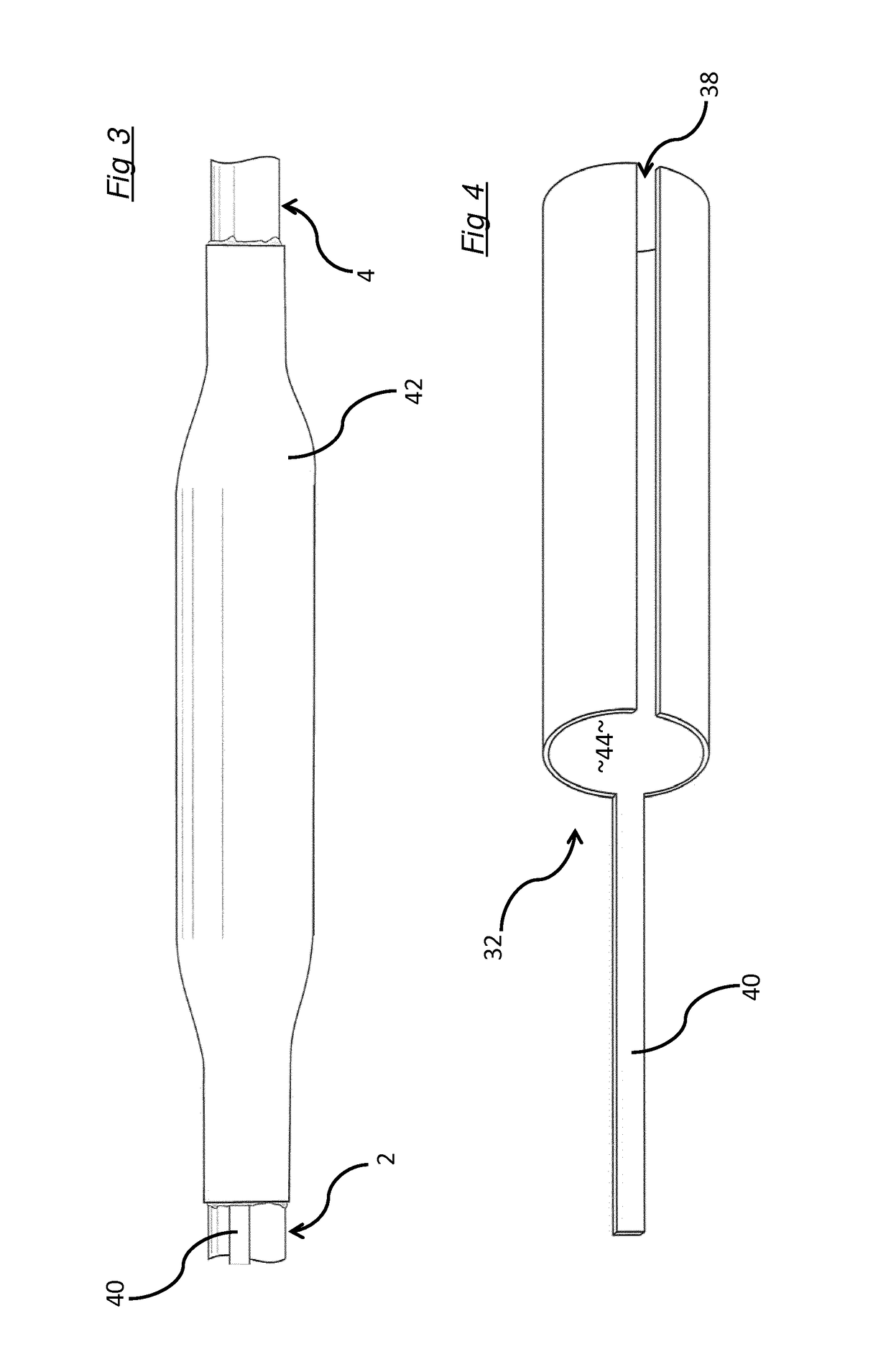Medium-voltage cable joint
- Summary
- Abstract
- Description
- Claims
- Application Information
AI Technical Summary
Benefits of technology
Problems solved by technology
Method used
Image
Examples
Embodiment Construction
[0020]FIG. 1 shows a conventional joint between two cables 2, 4, each of which has a robust yet to some extent flexible, weather- and waterproof outer covering which is shown cut back to the points 6, 8 for the purposes of making the join. The cables are essentially identical, each comprises several layers and the join is substantially symmetrical along the axis of the cables (from left to right in the drawing); for clarity, some elements which are common to both cables or to both ends of the join are shown in the drawings and described below only in respect of one of the cables. Shown extending longitudinally between the cables 2, 4 and radially between the outer covering and an inner insulator 14, and rolled back so that the join is visible is a mesh of screening wires 10 which run the length of the cables 2, 4 and are joined (shown schematically at 12 so as to provide a continuous earth.
[0021]Underneath the outer sheath, each cable has a layer 16 which is a semi-conductive screen...
PUM
 Login to View More
Login to View More Abstract
Description
Claims
Application Information
 Login to View More
Login to View More - R&D
- Intellectual Property
- Life Sciences
- Materials
- Tech Scout
- Unparalleled Data Quality
- Higher Quality Content
- 60% Fewer Hallucinations
Browse by: Latest US Patents, China's latest patents, Technical Efficacy Thesaurus, Application Domain, Technology Topic, Popular Technical Reports.
© 2025 PatSnap. All rights reserved.Legal|Privacy policy|Modern Slavery Act Transparency Statement|Sitemap|About US| Contact US: help@patsnap.com



